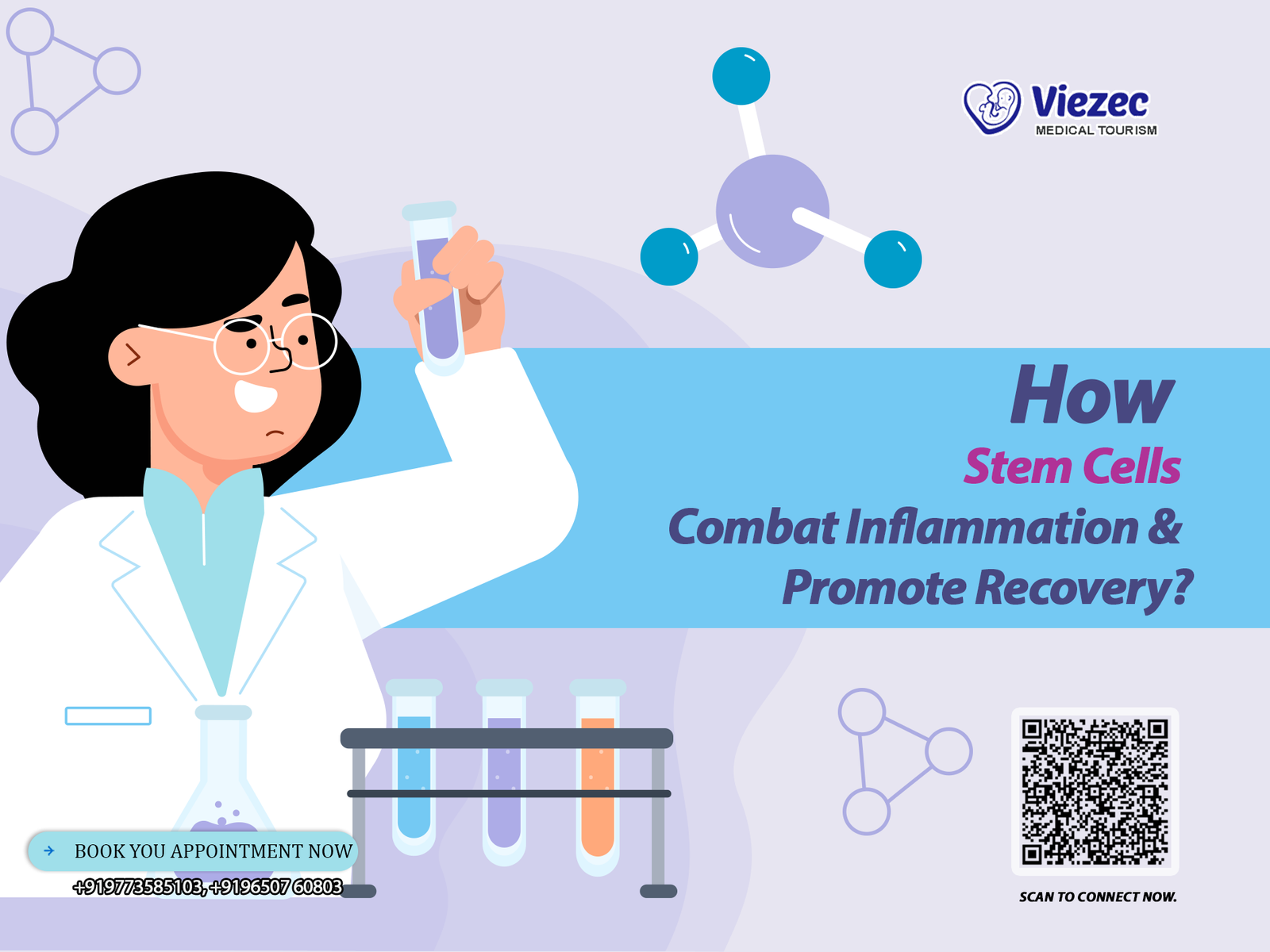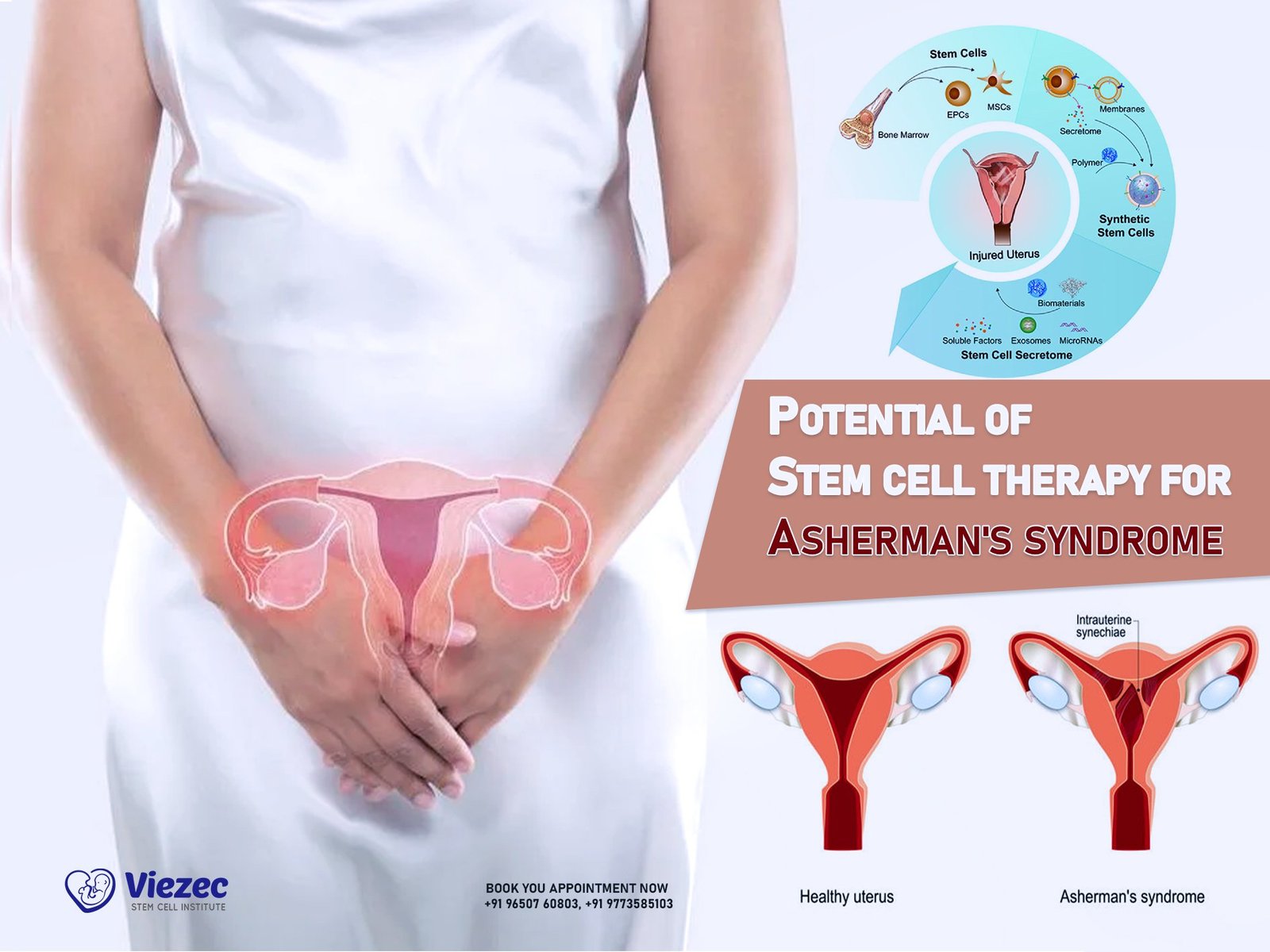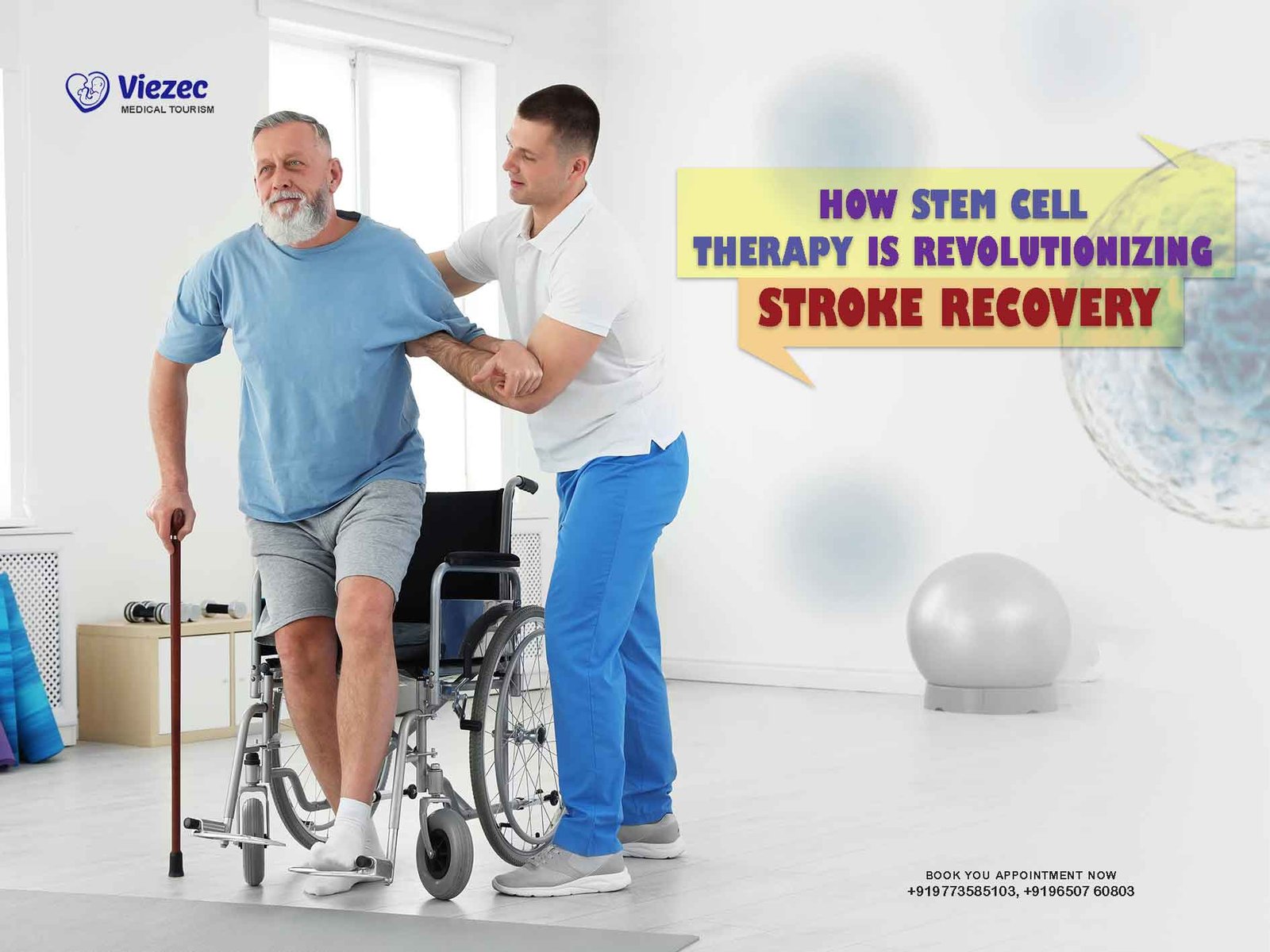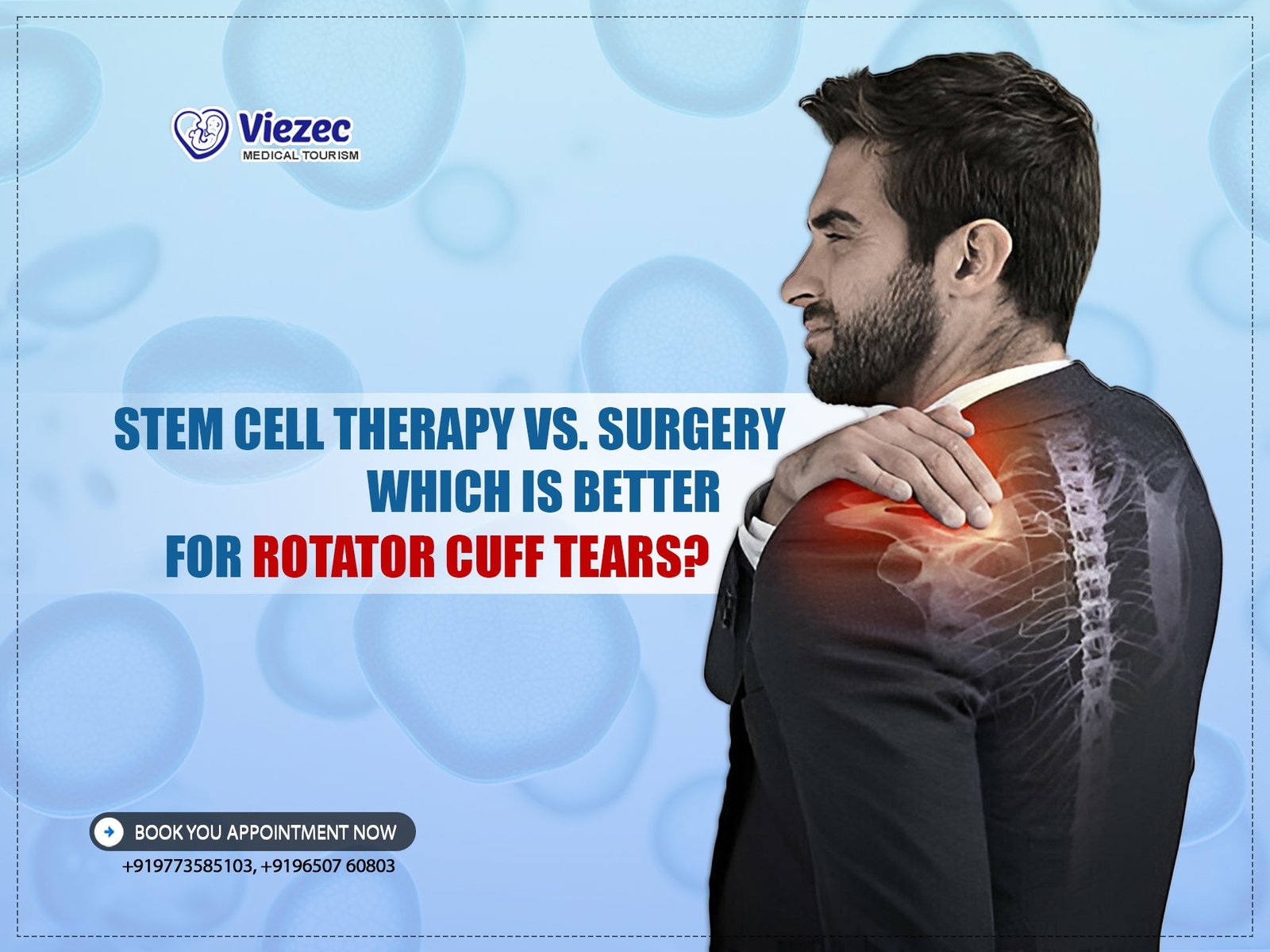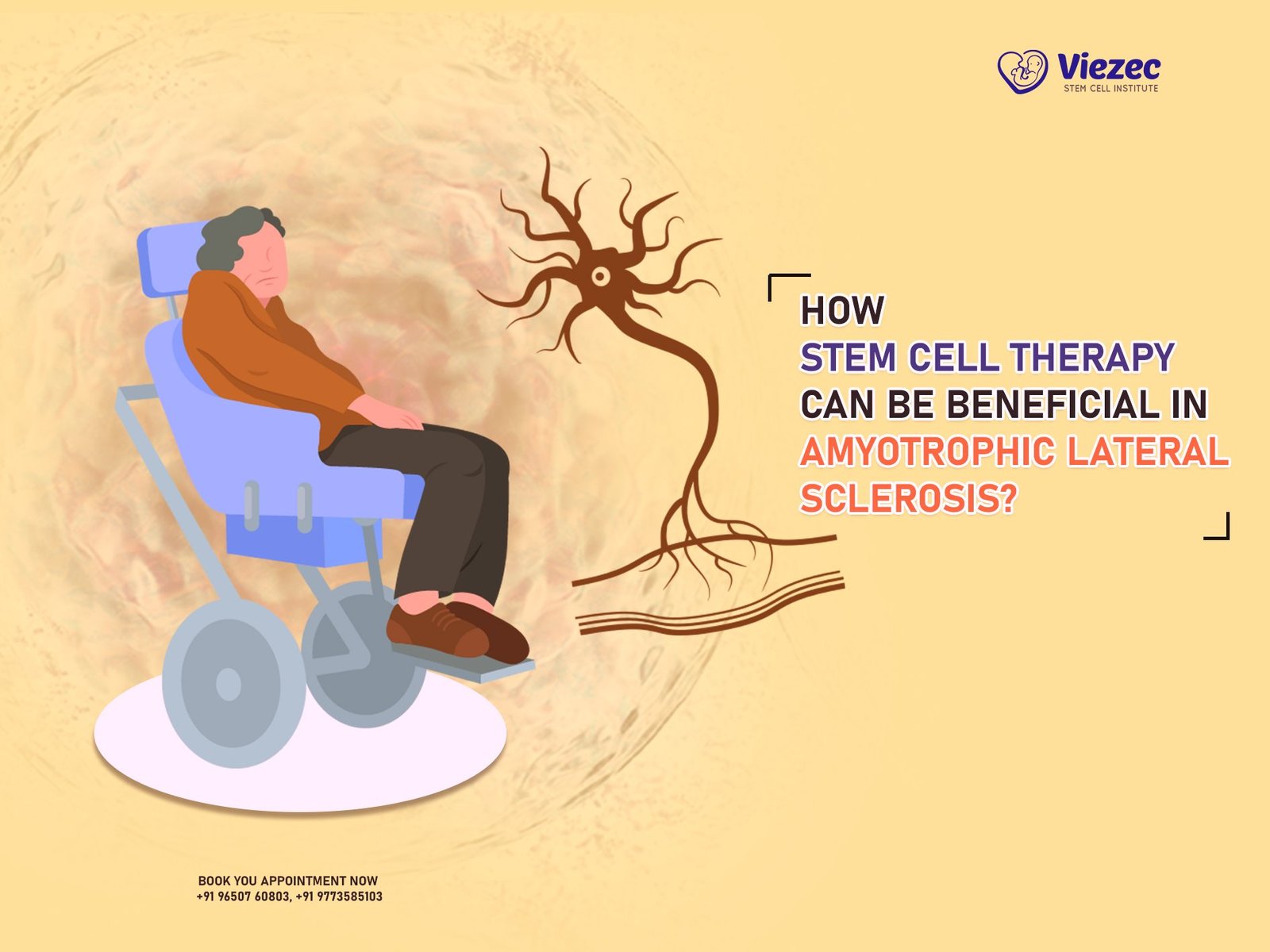Stem cell therapy offers a groundbreaking approach to healing by reducing chronic inflammation and promoting natural tissue repair. This blog explores how stem cells regulate immune responses, stimulate regeneration, and improve recovery from injuries, autoimmune conditions, and more—offering hope for patients seeking long-term relief beyond traditional treatments.
Understanding Inflammation and Its Role in Healing
What Is Inflammation?
Inflammation is the body’s built-in alarm system—a vital defense mechanism that kicks into gear when something’s wrong. Whether you’re fighting off an infection, healing from an injury, or exposed to harmful toxins, your body responds by activating immune cells, increasing blood flow, and releasing chemical messengers. This process, while often uncomfortable, is designed to protect and repair.
But there’s a catch: when inflammation sticks around longer than it should, it can start doing more harm than good.
Acute vs. Chronic Inflammation
Acute inflammation is your body’s first line of defense. It’s short-term, often lasting only a few hours to a few days. Think of the swelling and redness after twisting an ankle or catching a cold—that’s acute inflammation helping your body heal and fight off infection.
How Chronic Inflammation Delays Recovery
Chronic inflammation is another story. It lingers for weeks, months, or even years—often silently. Instead of helping the body heal, it can start attacking healthy tissue. Over time, this slow-burning process can lead to conditions like rheumatoid arthritis, type 2 diabetes, heart disease, and even some cancers. According to the National Institutes of Health (NIH), chronic inflammation plays a key role in many age-related and autoimmune diseases.
The Link Between Inflammation and Tissue Damage
When inflammation sticks around, your body continues to pump out cytokines—chemical messengers that can damage tissues when overproduced. Excessive cytokine activity leads to scarring, cell death, and impaired function in organs, muscles, and joints. This disrupts the body’s natural healing process, often resulting in pain, stiffness, or progressive degeneration.
Stem Cells 101: What You Need to Know
What Are Stem Cells?
Stem cells are the body’s raw materials—its master builders. Unlike regular cells that serve a specific function (like muscle or skin cells), stem cells have two superpowers: they can self-renew, and they can transform into specialized cell types. That means they not only replenish themselves, but they can also become the building blocks your body needs for healing—whether it’s regenerating damaged cartilage, repairing nerves, or calming inflammation.
In short, stem cells are the foundation of regenerative medicine, and their ability to adapt makes them one of the most promising tools for repairing the body from the inside out.
Types of Stem Cells Used in Therapy
There are several types of stem cells, but in therapeutic settings, two stand out for their healing potential and accessibility: mesenchymal stem cells (MSCs) and induced pluripotent stem cells (iPSCs).
Mesenchymal Stem Cells (MSCs)
MSCs are adult stem cells most commonly derived from bone marrow, adipose (fat) tissue, or umbilical cord tissue. They’re well-known for their ability to:
- Calm overactive immune responses
- Reduce inflammation
- Support the repair of bone, cartilage, muscle, and connective tissue
What makes MSCs especially exciting is their immunomodulatory effect—meaning they can tone down harmful inflammation without shutting down the immune system completely. According to research published in Frontiers in Immunology (2021), MSCs have been successfully used in treating autoimmune diseases and degenerative joint conditions.
Induced Pluripotent Stem Cells (iPSCs)
iPSCs are adult cells (often skin or blood cells) that scientists reprogram in a lab to behave like embryonic stem cells. They can become any cell type in the body, which makes them powerful candidates for customized therapies. iPSCs open the door to truly personalized medicine, especially for rare genetic disorders or organ-specific diseases.
However, iPSC therapies are still largely experimental, with ongoing studies exploring how to ensure safety and avoid risks like tumor formation. They’re not yet widely available in clinical practice, but they represent the future frontier of regenerative treatments.
The Connection Between Stem Cells and Inflammation
One of the most remarkable abilities of stem cells—especially mesenchymal stem cells (MSCs)—is their ability to directly influence inflammation. They don’t just regenerate tissue; they actively communicate with the immune system, guiding it to respond more appropriately. This is a major breakthrough in treating chronic inflammation, where the immune system gets stuck in overdrive.
How Stem Cells Target Inflammatory Pathways
When the body sends out distress signals—due to injury, infection, or chronic inflammation—stem cells are naturally drawn to the affected area. Once there, they release a cascade of bioactive molecules (including growth factors and signaling proteins) that modulate the immune response.
This process, called paracrine signaling, allows stem cells to act like messengers or conductors, orchestrating a more balanced healing environment. They don’t force the immune system to shut down; instead, they guide it back into balance, reducing harmful inflammation while preserving the body’s natural defense mechanisms.
Immunomodulation: Resetting the Immune System
Stem cells don’t just fight inflammation—they retrain the immune system to respond appropriately. This is called immunomodulation, and it’s at the heart of why stem cell therapy is so effective for chronic inflammatory and autoimmune conditions.
Reducing Pro-Inflammatory Cytokines
In chronic inflammation, the body produces excessive amounts of cytokines like TNF-α, IL-6, and IL-1β—all of which are known to drive pain, swelling, and tissue breakdown. MSCs can suppress these pro-inflammatory cytokines, helping to quiet the storm and give the body a chance to heal.
Peer-reviewed studies, including one published in Stem Cell Research & Therapy (2020), confirm that MSCs can significantly lower these cytokine levels in conditions like rheumatoid arthritis and inflammatory bowel disease.
Promoting Anti-Inflammatory Signals
At the same time, stem cells increase the production of anti-inflammatory mediators, including IL-10 and TGF-β. These help to resolve inflammation and promote tissue repair. This dual action—quieting the destructive forces while boosting the healing ones—is what makes stem cells such a revolutionary tool in medicine.
Stem Cells in Action: Promoting Recovery
Once inflammation is under control, the body still has one more challenge: repairing the damage. This is where stem cells truly shine—not just by calming the immune response, but by actively rebuilding what’s been lost or broken. Whether it’s worn cartilage, damaged nerves, or injured muscle tissue, stem cells help create the right conditions for long-term healing.
Tissue Regeneration and Repair
Stem cells are natural architects of regeneration. Once they reach injured tissue, they begin releasing growth factors and healing signals that stimulate the body’s own cells to repair and rebuild.
Stimulating New Cell Growth
One of the most powerful effects of stem cells is their ability to kickstart the regeneration of new cells. They promote the development of healthy tissue—like muscle, cartilage, bone, and nerve cells—by encouraging the activity of local stem and progenitor cells in the damaged area.
This process doesn’t just patch things up temporarily—it promotes true restoration at the cellular level.
Enhancing Blood Flow and Oxygen Supply
Healing can’t happen without oxygen and nutrients. Stem cells help solve this by promoting angiogenesis, or the formation of new blood vessels. Better circulation means more oxygen and healing resources delivered right where they’re needed, accelerating recovery and reducing tissue death.
Reducing Pain and Improving Function
As stem cells reduce inflammation and support structural repair, many patients experience a significant decrease in pain and a noticeable improvement in mobility and overall function.
This is particularly powerful in conditions like osteoarthritis, sports injuries, and degenerative disc disease, where traditional treatments may only manage symptoms. With stem cell therapy, healing goes deeper—addressing the root causes instead of just masking the pain.
Conditions That Benefit from Stem Cell Therapy
Stem cell therapy is no longer confined to lab research or theoretical promise—it’s already changing lives. From chronic illness to injury recovery, stem cells are being used in clinics around the world to treat conditions that were once considered irreversible. While research continues to expand, here are some of the most compelling areas where stem cell therapy is making a real difference.
Autoimmune and Inflammatory Disorders
In autoimmune diseases, the body’s immune system turns against its own tissues—causing pain, swelling, and long-term damage. Stem cell therapy offers a groundbreaking approach by modulating the immune response instead of just suppressing it.
Patients with conditions like rheumatoid arthritis, lupus, multiple sclerosis, and Crohn’s disease have shown improvement in symptoms, inflammation levels, and quality of life. In fact, clinical trials cited in The Lancet Rheumatology (2022) confirm that mesenchymal stem cells can reduce autoimmune flare-ups and improve function in these patients, often with fewer side effects than traditional drugs.
Sports Injuries and Musculoskeletal Conditions
Athletes—and anyone living with joint or soft tissue pain—are turning to stem cell therapy to speed up healing and avoid surgery. Conditions like torn ligaments, tendonitis, rotator cuff injuries, meniscus tears, and osteoarthritis respond particularly well to stem cell treatment.
Rather than masking symptoms with corticosteroids or pain meds, stem cells help repair damaged tissues, restore mobility, and prevent further degeneration. It’s becoming a preferred option for people looking to get back to active living without long downtime or invasive procedures.
Neurological and Cardiovascular Recovery
One of the most exciting frontiers in stem cell research is its potential to repair the brain, spinal cord, and heart.
In stroke patients, stem cells have shown the ability to support neurogenesis (the creation of new nerve cells) and improve function over time. In spinal cord injuries, early-phase studies indicate potential for restoring movement or sensation by regenerating neural tissue. Similarly, stem cells are being studied for their role in helping heart attack patients recover by promoting new cardiac muscle growth and improving blood flow.
Although some of these uses are still in clinical trial phases, the early results are promising and point toward a future where regenerating nerves and heart tissue is no longer science fiction.
Treatment Process and What to Expect
Starting stem cell therapy can feel like stepping into the future of medicine—but it’s important to know what to expect along the way. From how stem cells are delivered to what recovery looks like, this process is designed to be minimally invasive, personalized, and focused on long-term healing.
Methods of Stem Cell Delivery
There’s no one-size-fits-all approach when it comes to how stem cells are administered. The method depends on your condition, symptoms, and overall health goals. The two most common delivery options are intravenous (IV) infusion and targeted injections.
Intravenous (IV) Infusion
In IV therapy, stem cells are delivered through a standard intravenous drip, allowing them to circulate throughout the body and respond to sites of inflammation. This is especially effective for systemic or autoimmune conditions like lupus or multiple sclerosis, where inflammation affects multiple organs or systems.
Because stem cells naturally migrate to inflamed or damaged tissue, IV delivery offers a non-invasive option that still enables precise targeting by the body itself.
Targeted Injections
For localized problems—like joint pain, torn tendons, or back injuries—stem cells can be injected directly into the affected area. These guided injections (often using ultrasound or fluoroscopic imaging) ensure the cells reach the source of damage, allowing for faster and more concentrated healing.
Targeted injections are commonly used for treating osteoarthritis, rotator cuff tears, knee injuries, and similar musculoskeletal conditions.
Recovery Timeline and Monitoring
Recovery time varies based on the individual and the condition being treated. Some patients notice improvements within a few weeks, while others may see more gradual results over a few months as healing progresses at the cellular level.
You won’t be left on your own after treatment. A good clinic will schedule regular follow-up appointments to:
- Monitor your body’s response to the therapy
- Track progress through physical exams or imaging
- Adjust your treatment plan if needed
Patients are often encouraged to pair stem cell therapy with physical therapy or lifestyle changes to support full recovery and maximize outcomes.
Real-World Impact: Studies and Patient Stories
Stem cell therapy isn’t just promising in theory—it’s delivering results in real life. Backed by a growing body of clinical research and compelling patient testimonials, stem cell treatments are redefining what recovery can look like. Whether it’s walking without pain after years of arthritis or regaining movement post-injury, the results speak volumes.
What the Research Says
The science behind stem cells has evolved rapidly over the past decade. Clinical trials and peer-reviewed studies continue to demonstrate their safety, versatility, and effectiveness, especially in inflammatory and degenerative conditions.
Researchers are also exploring stem cells in complex conditions like Parkinson’s disease, spinal cord injuries, and post-heart attack recovery—with early results showing potential for tissue regeneration and improved quality of life.
While not every application is FDA-approved yet, ongoing trials are expanding the boundaries of what’s possible. The future is incredibly promising.
Success Stories and Testimonials
Real people are already experiencing the benefits of stem cell therapy. For instance:
- Athletes are returning to their sport faster after knee or shoulder injuries—without needing surgery.
- Chronic pain sufferers are finding relief after years of failed treatments.
- Autoimmune patients report fewer flare-ups, reduced medications, and a renewed sense of energy.
- Stroke survivors and those with neurological damage have shared improvements in movement, speech, and coordination after stem cell support.
Many of these stories come from patients who felt they had exhausted their options—until regenerative medicine offered a new path forward.
Are There Risks? What You Should Know
Stem cell therapy offers exciting possibilities, but like any medical treatment, it’s important to understand the risks, regulations, and how to choose the right provider. This isn’t about fear—it’s about being informed and empowered to make the best decision for your health.
Safety, Regulations, and Ethical Considerations
In general, stem cell therapy—especially when using your own cells (autologous therapy)—has a strong safety profile. Procedures are typically minimally invasive, and most patients experience little to no downtime. However, potential side effects may include:
- Mild soreness at the injection site
- Temporary inflammation as part of the healing process
- Rare risks like infection or allergic reaction (mostly with improperly handled or non-autologous cells)
One of the biggest concerns isn’t the cells themselves—it’s unregulated clinics making exaggerated claims or offering unsafe treatments.
In the U.S., the FDA regulates stem cell therapies, and only a few have received full approval. Many treatments are available under clinical trials or regulatory exemptions, especially when cells are minimally manipulated and used for homologous purposes (i.e., repairing the same type of tissue from which they were taken).
Internationally, the rules vary widely. Some countries have more lenient regulations, which can attract “medical tourism.” That’s why it’s crucial to do your research.
How to Choose a Reputable Clinic
With the growing popularity of stem cell therapy, a surge of clinics now offer regenerative treatments worldwide. But not all providers follow the same standards—or deliver the same results. Choosing the right clinic is essential to ensure your safety, receive ethical care, and maximize your chances for successful recovery.
So, what should you look for in a reputable stem cell clinic?
Look for These Key Qualities:
-
Board-Certified Medical Professionals: Your treatment should be led by licensed, experienced doctors—ideally with a background in orthopedics, neurology, or regenerative medicine.
-
Regulatory Compliance: Make sure the clinic follows your country’s health regulations. In India, clinics should be compliant with ICMR (Indian Council of Medical Research) guidelines and, where applicable, international standards such as Good Manufacturing Practice (GMP).
-
High-Quality Stem Cell Sources: Whether using autologous (your own) or donor-derived cells, reputable clinics ensure sterile, lab-certified handling and ethical sourcing.
-
Clear, Evidence-Based Protocols: Be wary of clinics that make sweeping “cure-all” claims. Look for providers who offer science-backed treatments for specific conditions—and who are honest about the expected outcomes.
-
Personalized Treatment Plans: Your health is unique. The best clinics tailor treatments based on your diagnosis, medical history, and individual needs—not a one-size-fits-all protocol.
-
Follow-Up and Aftercare: Recovery doesn’t end after the procedure. A trustworthy clinic will provide ongoing monitoring, support, and adjustments to optimize your healing.
Viezec Stem Cell Institute: A Trusted Name in India
If you’re considering stem cell therapy in India, Viezec Stem Cell Institute is one of the country’s most respected providers in the regenerative medicine space. Located in New Delhi, Viezec offers:
- Treatments administered by qualified and experienced doctors
- A strong track record in neurological, orthopedic, and autoimmune conditions
- Use of GMP-compliant labs and ICMR-aligned practices
- Customized treatment plans and transparent patient communication
- Support for international patients, including end-to-end travel and care coordination
Viezec has helped patients from around the world explore alternative paths to healing—safely, ethically, and with a patient-first mindset.

